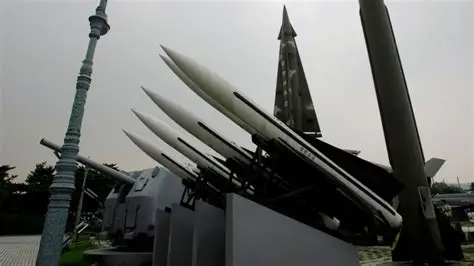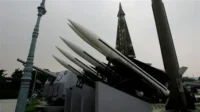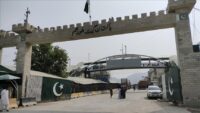By Major (R) Haroon Rasheed, Defense and Strategic Analyst – South Asian Military Dynamics and Technology.
Recent videos showing old Scud missiles being moved toward the Pakistan-Afghanistan border have raised fresh questions about Afghanistan’s military capabilities and intentions. While these weapons are decades old, their sudden reappearance brings back memories of a violent chapter in the region’s history — and sparks concern over what message the Taliban might be trying to send.
Ajit Doval arrived in Bishkek to participate in meeting of India-Central Asia NSA’s
Punjab Govt approves establishment of new industrial estate in Sialkot
The Wire likens RSS to Taliban, says both are two sides of the same coin
For more such Opinions & Blogs, click here.
How Scud Missiles Came to Afghanistan
Afghanistan’s relationship with the Scud missile goes back to the early 1980s, when Babrak Karmal’s Soviet-backed government ordered about 300 of these missiles from Moscow. The idea was simple — to give Kabul a long-range strike capability against the growing Mujahideen resistance.
When the Soviet Union invaded Afghanistan in 1979, these missiles became part of its war strategy. Between 1985 and 1989, Soviet forces launched an estimated 1,700 Scud missiles, many of them targeting Mujahideen hideouts and supply routes. The first Scud missile was reportedly fired near the Torkham border, marking the beginning of a new phase in the brutal conflict.
But while the missiles caused massive destruction, they did little to change the course of the war. The Scuds were too inaccurate and often hit civilian areas, leading to loss of life and displacement rather than decisive military results. After the Soviet withdrawal, whatever was left of this missile stockpile fell into the hands of Najibullah’s government, and later got scattered among various warlords during Afghanistan’s civil war in the 1990s.
Pakistan elected to UNHRC, vows to spotlight rights abuses in IIOJK
IIOJK bans sale, distribution and use of India’s toxic anti-cold, cough syrups
India plotting another false flag operation in IIOJK to malign Pakistan
Fading Away
By the time the Taliban first came to power in the late 1990s, most of these missiles were already out of service. Years of neglect, lack of maintenance, and the absence of trained personnel meant that Afghanistan’s Scud program was effectively defunct by 2005. Many of the launchers rusted away in depots, serving as silent reminders of a long and bloody past.
The Taliban’s Display of Power
When the Taliban returned to power in 2021, they surprised many by showcasing a few old Scud missiles during a military parade in Kabul. Analysts were quick to point out that these were likely non-functional relics, but the symbolism was clear — the Taliban wanted to display military hardware as a mark of sovereignty and strength.
Fast forward to the present, and videos have surfaced showing Scud transporters moving in eastern Afghanistan, close to Pakistan’s border areas. Whether these missiles can actually be fired or not is uncertain, but their movement is being closely watched. In the current regional climate, even a symbolic action can have real consequences.
Pakistan Beat South Africa by 93 Runs in 1st Test
Akshay Kumar moves to court to protect his personality rights
Aishwarya Rai Shares First Post After Abhishek Bachchan Thanked Her In Emotional Speech
Pakistan’s Preparedness
Pakistan’s defense establishment has little reason for alarm but every reason for vigilance. The Pakistan Air Force (PAF) and Army Strategic Forces Command have advanced surveillance, radar, and interception systems that can easily detect and neutralize such outdated weapons.
Modern aircraft like the JF-17 Block III and F-16 Block 52, supported by early warning systems, provide Pakistan a clear technological edge. Moreover, Pakistan’s own missile programs — including the Nasr tactical system and Ababeel MIRV missile — reflect a robust deterrence posture. In practical terms, an old Soviet-era Scud poses no real threat to Pakistan’s defense grid.
Reading the Message Behind the Movement
The more important question isn’t about the missiles themselves — it’s why they’re being moved now. The Taliban may be trying to send a political or psychological message, especially amid rising tensions along the Durand Line and increasing border incidents.
For Pakistan, the key is to respond calmly but firmly — maintaining strong surveillance and diplomatic communication channels while avoiding overreaction to what may be little more than a show of strength.
Pakistani Security Forces Repel Attack, Afghan Taliban Destroy Friendship Gate
Jaisalmer Bus Was Used as AC Sleeper, Short Circuit Caused Fire That Killed 20
Renowned Indian-Origin US Defence Expert Ashley Tellis Arrested Over Secret Documents
Conclusion
The Scud missiles of Afghanistan are ghosts from another era — relics of a war that changed the region forever. Yet their movement toward the border reminds us that symbols still matter in South Asian geopolitics.
While Afghanistan’s Scuds may no longer function, their reappearance reflects the uncertain and fragile nature of regional security. For Pakistan, vigilance and preparedness remain the best countermeasures — backed by technology, intelligence, and strategic restraint.
For more such Opinions & Blogs, click here.
Pakistan Army foils Afghan Taliban and Fitna al-Khawarij attacks in Chaman’s Spin Boldak area
Mahabharat’s Karna Pankaj Dheer dies after battling cancer
Taliban Pitched Against Pakistan, Humiliating Defeat Underway
PM vows complete eradication of polio from country
UN chief voices concern over Pak-Afghan clashes
Major (R) Haroon Rasheed is a defense and strategic analyst specializing in South Asian military dynamics, deterrence strategies, and defense modernization. He is a member of the Research and Evaluation Cell for Advancing Basic Amenities and Development.
Stay tuned to Baaghi TV for more. Download our app for the latest news, updates & interesting content!






